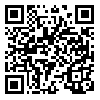Volume 7, Issue 25 (2014)
LCQ 2014, 7(25): 121-152 |
Back to browse issues page
Download citation:
BibTeX | RIS | EndNote | Medlars | ProCite | Reference Manager | RefWorks
Send citation to:



BibTeX | RIS | EndNote | Medlars | ProCite | Reference Manager | RefWorks
Send citation to:
Farhangi S, Bastani Khoshkbijari M. Social Semiotic of Amirkhani’s Bivatan. LCQ 2014; 7 (25) :121-152
URL: http://lcq.modares.ac.ir/article-29-8961-en.html
URL: http://lcq.modares.ac.ir/article-29-8961-en.html
Abstract: (11336 Views)
Semiotics is an approach that studies the signs and their hidden meanings. This article is a social semiology of Bivatan—amodern novelwritten by Reza Amirkhani. The novel struggles with fundamental issues such as identity, culture, and social traditions. Like most other postmodern novels, Bivatan is a combination of reality and imagination. Most parts of the story happen outside of Iran and show the conflict between Islamic-Persian culture and the Western culture. The conflict between humans and their surrounding is another major aspect of this novel. This article elaborates on the identity-related signs such as religion, food, costume, job, social relations, and so forth. The fundamental role of religion, drawing on Quranicverses, identity crisis, and differences in social class are among the other subjects which will be discussed in this paper.
Received: 2013/09/27 | Accepted: 2014/01/30 | Published: 2014/06/17
| Rights and permissions | |
 |
This work is licensed under a Creative Commons Attribution-NonCommercial 4.0 International License. |








